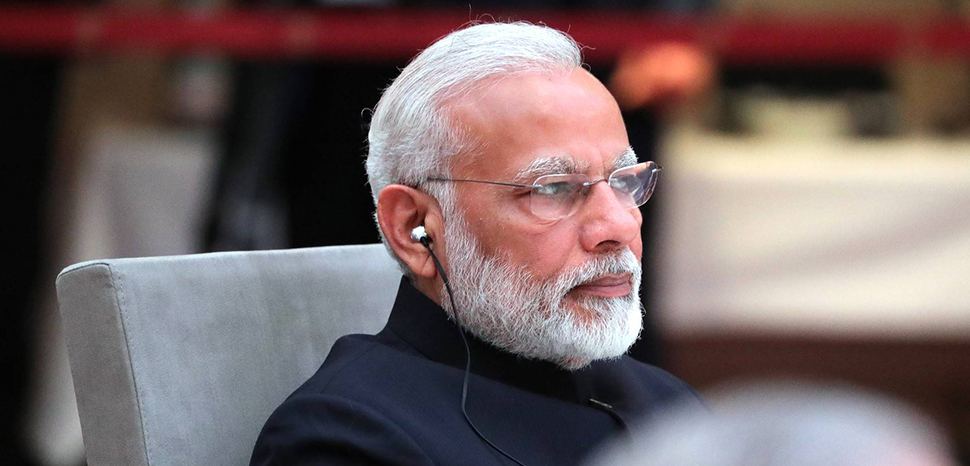Mark S. Cogan & Upamanyu Basu

This November, members of the Asia-Pacific Economic Cooperation (APEC) forum will converge on Thailand for its 2022 annual gathering. The 21-member bloc is home to more than 2.9 billion people and represents more than half of global GDP, as the United States, China, and Australia are among its members. Thailand’s theme for this year as chair is “Open. Connect. Balance”, dividing optimistic outcomes into three categories: opening the Asia-Pacific to new opportunities, connecting across all dimensions of trade, and achieving balance in all aspects of APEC partnerships.
However, if at least two of these three indicators of progress hope to be achievable, APEC should look once again toward expansion. The last time the bloc added new members was 1998, when Russia, Peru, and Vietnam joined. A moratorium on membership soon after was put into place, which lasted until 2010, but since then, no new members have been accepted. Some, like India, have tried in the past, indicating interest since the 1990s. India made a push for membership in 2015, after some assistance from the Obama administration and then-Prime Minister Kevin Rudd of Australia. The question now is, with APEC just weeks away, is it suitable for India to revisit the idea of APEC membership? And if not now, then when?
While India meets all of the membership requirements, there are many barriers that prevent its inclusion. Indian Prime Minister Narendra Modi’s “Make in India”, which has made strides in encouraging companies to manufacture and assemble products in India and attract foreign investment has some appeal to APEC members. However, India is still regarded as a protectionist state. For example, despite Modi’s rally diplomacy during the Trump presidency, a 2019 report from the Office of the United States Trade Representative (USTR) noted that India’s applied tariff rate was at 13.8 percent, the highest of any major economy.
The report highlighted major differences between the U.S. and India on trade, including retaliatory tariffs from 10 to 50 percent on certain products imported from the U.S., which the USTR called a response to Trump’s decision to adjust imports of steel and aluminum. Other developed countries see India’s food security programme that subsidizes local farmers in order to provide food for the rural poor as unfair and in breach of World Trade Organisation (WTO) rules on subsidy limits. Negotiations with other APEC members like Canada have hit dead ends, particularly negotiations on an Comprehensive Economic Partnership Agreement (CEPA). It is India’s protectionism that gives APEC members pause when considering membership, as many believe that India would be a disruptive influence over a regional forum that operates by consensus. India’s intractable position on the Regional Comprehensive Economic Partnership (RCEP) is also reflective of these sentiments.
India’s domestic constraints with respect to initiating key policy reforms has been a considerable marker as to why APEC members have had a negative perception regarding India’s candidacy. However, there are reasons to revisit this. India, now the fifth-largest economy in the world, is set, considering its current rate of growth, to overtake Germany in 2027 and Japan in 2029 to become the third-largest globally. APEC, which was created in 1989 as a regional forum, while concerned about crippling protectionism, should also embrace change, and recognize the geopolitical realities that have altered the concept of the Asia-Pacific region into a larger Indo-Pacific construct. India’s advancement as an economic and maritime power in the region would add legitimate value to the bloc. Indian infrastructure projects, such as the Golden Quadrilateral Highway Network, the India-Thailand-Myanmar Trilateral Highway, and the Bangladesh-Bhutan-India-Nepal transport network are both enticing and provide added connectivity to other South Asian economies. Further, trade liberalization, rather than politically-motivated protectionism, is the only option to sustain what is currently a 7 percent annual growth rate. It will also be difficult for APEC members to resist increased access to India’s massive labor force and growing middle-class consumers.
India has attempted reforms, but after COVID-19 and recent vulnerabilities in regional supply chains, it has looked inwardly at human development, and using low-carbon initiatives in order to make the country more attractive to foreign investors. Looking inward will not, however, close the gaps between APEC members and India. Movement in the right direction, particularly on regional trade partnerships such as RCEP might move discussions forward. Among Australia’s priorities in the previous administration was India’s inclusion, but since New Delhi ultimately decided against joining, negotiations have been sidelined.
The reality for New Delhi is that it simply has few friends within APEC to make inclusion a near-term reality. The Obama administration’s interest is now just a remnant of the past, as is Moscow and Beijing’s overtures. Tensions with China cloud a potential revisit. The Biden administration has not prioritized this year’s gathering, with the president skipping the high-level event in November for personal reasons, sending Vice President Kamala Harris in his place. While in 2021, Biden had made claims to “unleash the economic power of the region and to deepen U.S. economic engagement throughout the Indo-Pacific”, but engagement has been limited to the Indo-Pacific Economic Framework (IPEF). India, while agreeing with three of the framework’s four pillars, pulled out of the critical trade pillar. With progress halted and Thailand’s hosting of APEC complicated by pressing matters in Ukraine and Vladimir Putin’s impending arrival, India will likely have to wait further down the line, particularly when the United States hosts the gathering in 2023.
No comments:
Post a Comment